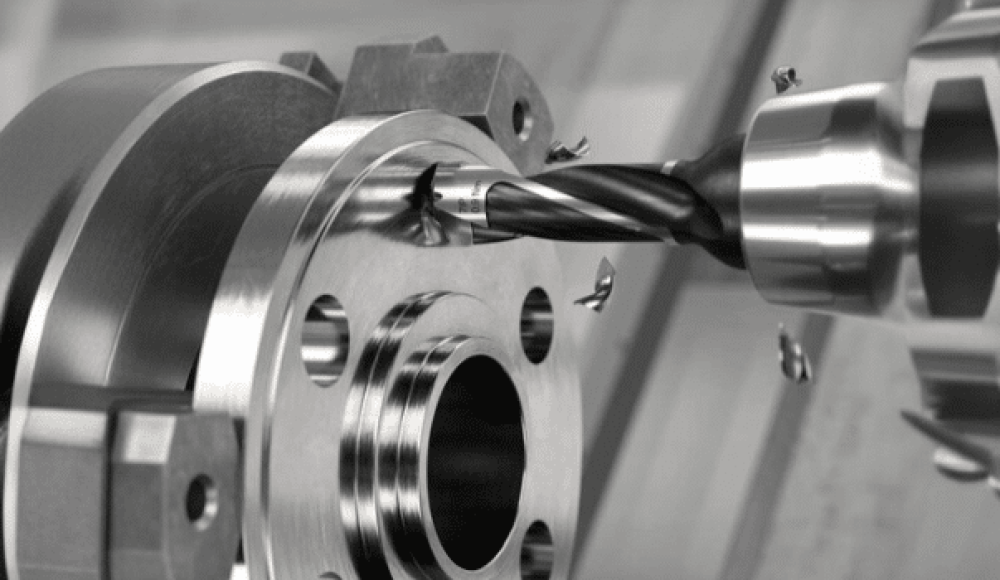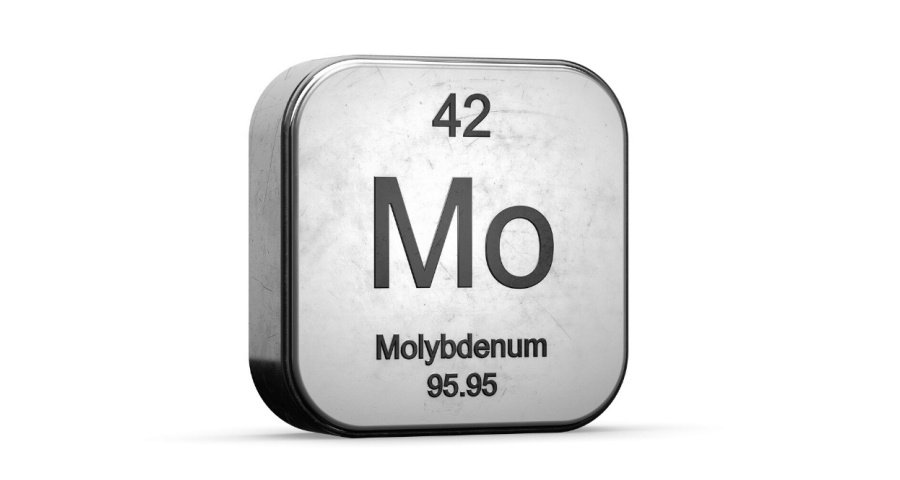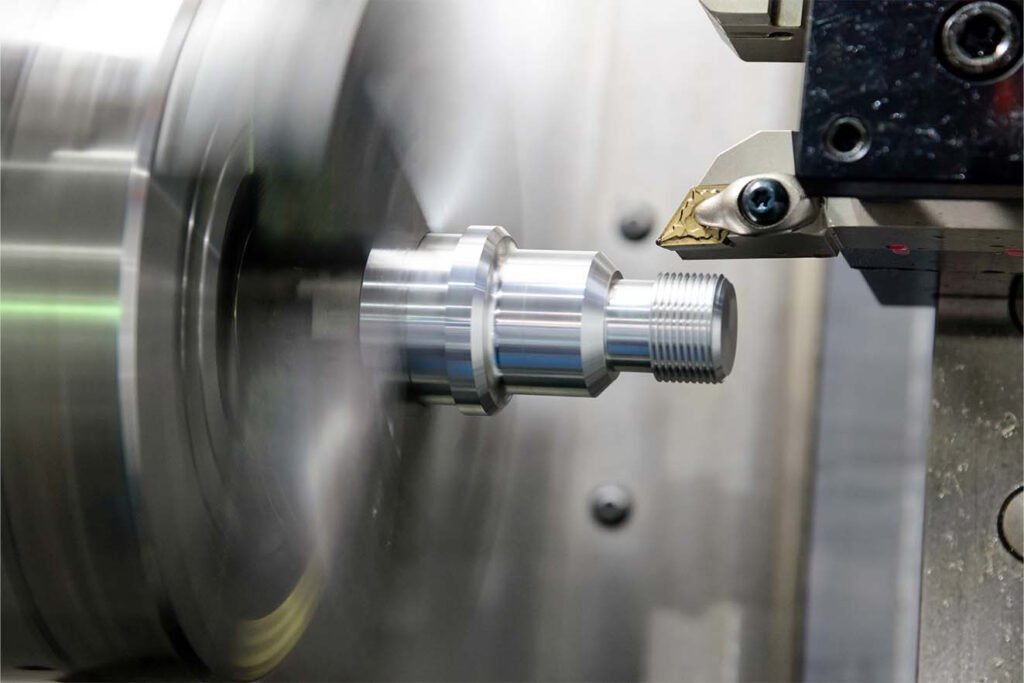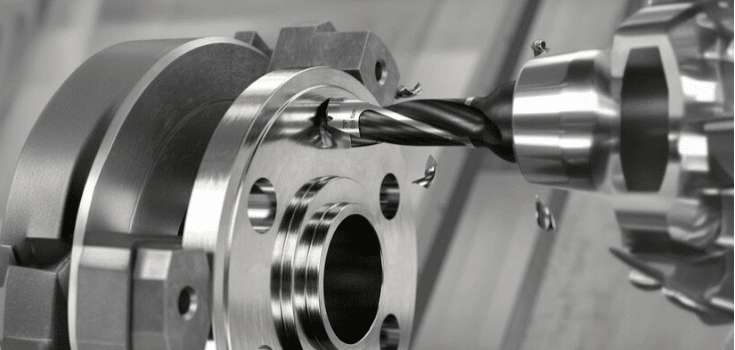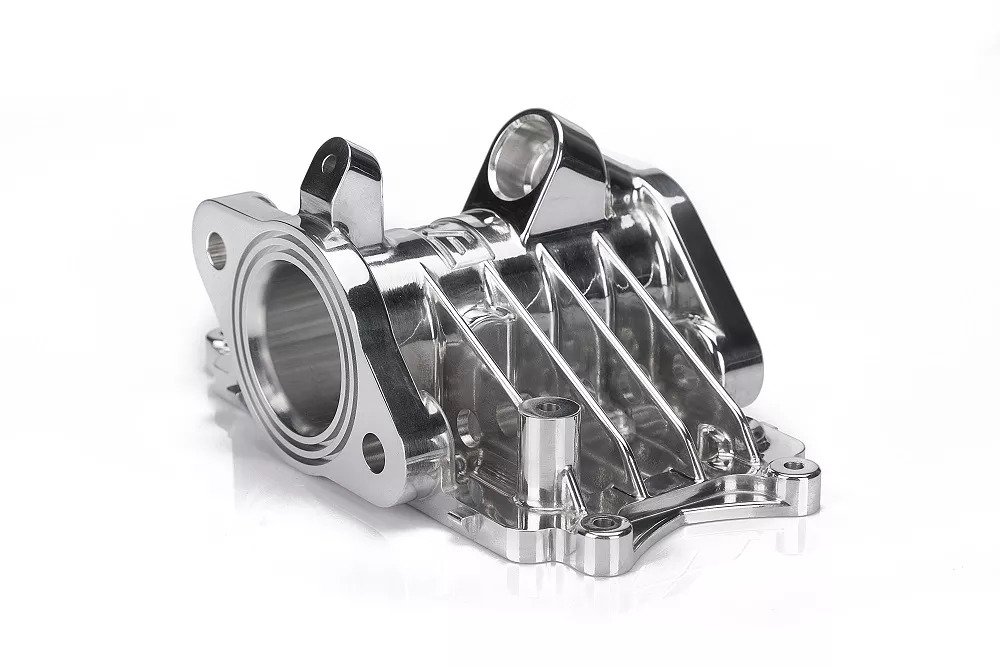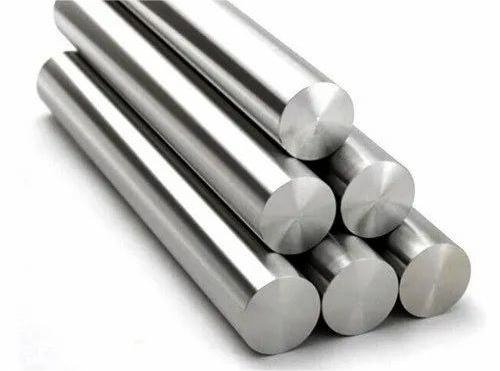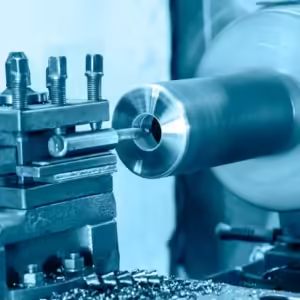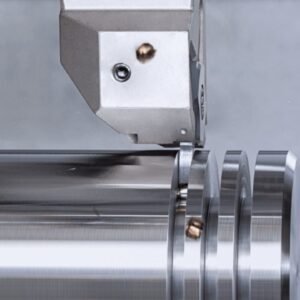モリブデンの機械加工は、平均的な金属切断作業ではありません. As a refractory metal with an exceptionally high melting point, extreme hardness, and inherent brittleness, molybdenum demands specialized machining strategies. It’s not enough to simply use standard CNC equipment — you need the right cutting tools, optimized feeds and speeds, and effective cooling systems to achieve clean, 正確な, and durable results.
This guide is designed for engineers, 機械工, and procurement specialists who want to understand how to work with molybdenum effectively. カバーします そのユニークなプロパティ, 機械加工方法, 課題, 成績, アプリケーション, surface finishing techniques, and share practical parameters from real-world case studies.
Understanding Metal Molybdenum
モリブデン (モー) aです refractory metal with a melting point of 2623°C (4753°F), placing it among the top materials for extreme heat applications. While less common than steel or aluminum, それはを提供します rare combination of strength, 耐食性, and thermal stability.
主要なプロパティ:
高融点: Maintains structural integrity at extreme temperatures.
Excellent Thermal Conductivity: Rapid heat transfer makes it ideal for thermal management.
Low Thermal Expansion: Dimensional stability under heat stress.
高強度 & 硬度: Retains mechanical strength even at elevated temperatures.
耐食性: Resistant to oxidation and chemical attack.
This makes molybdenum an excellent choice for 航空宇宙, 防衛, semiconductor, and high-temperature industrial applications.
Molybdenum vs. 他の金属
| 財産 | モリブデン | 鋼鉄 | チタン | アルミニウム | 銅 |
| 融点 (℃) | 2,623 | 1,370–1,540 | 1,668 | 660 | 1,085 |
| 強さ & 硬度 | 高い | Moderate–High | 高い | 低い | 適度 |
| 熱伝導率 | 素晴らしい | 適度 | 適度 | 良い | 非常に高い |
| 密度 (g/cm3) | 10.28 | 7.85 | 4.51 | 2.7 | 8.96 |
| 電気伝導性 | 良い | 適度 | 適度 | 素晴らしい | 素晴らしい |
| 熱膨張 | 低い | 適度 | 低い | 高い | 適度 |
| 耐食性 | 高い | 適度 | 高い | 適度 | 適度 |
Techniques in Molybdenum Machining
CNC Milling Molybdenum
Milling is perfect for creating 複雑な形状, ポケット, スロット, and contours in molybdenum parts. しかし, the hardness of the material means you should approach it with extra care.
ベストプラクティス:
Tool choice: Use sharp carbide or diamond-coated end mills to withstand wear.
Cutting speeds: Keep surface speed low (around 35–75 m/min for roughing) to avoid excess heat.
Feed rates: Moderate feeds (0.15–0.4 mm/rev) give a good balance between productivity and surface finish.
クーラント: Apply generous amounts of high-performance water-miscible coolant to control temperature.
仕上げ: For fine details, take light passes (0.02–0.08 mm per side) to reduce stress and prevent chipping.
CNC Turning Molybdenum
Turning is often used to produce cylindrical parts, リング, and precision shafts. Molybdenum’s brittleness means that any sudden impact or vibration can ruin a part.
ベストプラクティス:
ツールジオメトリ: Use sharp carbide-tipped tools with positive rake to minimize cutting force.
Setup rigidity: Keep the workpiece and tooling setup as rigid as possible to avoid chatter.
Cut depth: Rough with 4–7 mm depth of cut, finish with 0.1–0.2 mm for accuracy.
Coolant delivery: Use a strong, targeted coolant stream to protect both the tool and the workpiece.
表面仕上げ: To achieve a smooth finish, reduce feed and take a final spring pass with no additional offset.
CNC Drilling Molybdenum
Drilling molybdenum requires steady feed and plenty of cooling to prevent cracks and maintain hole accuracy.
ベストプラクティス:
Tool material: ハイス鋼 (HSS) cobalt drills can work, but carbide drills last longer in production runs.
Peck drilling: Use short pecks to break chips and allow coolant to reach the cutting zone.
Spindle speed: Keep RPM moderate to avoid overheating; lower speeds for larger diameters.
Coolant type: Use a lubricant-rich coolant to reduce friction and extend tool life.
Hole finish: For high-precision bores, follow up with reaming or boring to achieve final size.
Challenges in Molybdenum Machining
It’s Hard and Brittle
Molybdenum’s hardness means it resists cutting, which can wear down your tools much faster than softer metals.
同時に, it’s brittle—so if you push too hard, it can chip or crack instead of giving you a smooth cut.
It Builds Heat Quickly
With such a high melting point, molybdenum doesn’t melt easily—but the heat generated during cutting can still damage tools.
Without good cooling, you’ll see tool softening, poor surface finish, and maybe even workpiece warping.
Tool Wear is a Constant Battle
Even high-quality carbide tools can dull quickly if speeds and feeds aren’t dialed in perfectly.
Frequent tool changes mean more downtime and higher machining costs.
It’s Not Forgiving on Setup
Any vibration or flex in your setup can ruin accuracy, cause chatter marks, and even break the part.
You need rigid fixturing, solid tool holding, and careful alignment from the start.
Coolant Control is Critical
Standard coolant setups often aren’t enough—molybdenum needs targeted, high-flow cooling to pull heat away from the cutting zone.
The wrong coolant type can also cause surface discoloration or oxidation.
結論: Machining molybdenum isn’t impossible—it just demands patience, 精度, and the right approach. If you respect the material’s quirks and work within its limits, you can produce parts that perform flawlessly in the toughest environments.
Applications of Machined Molybdenum
Aerospace and Defense ✈️🛡
Rocket engines: Molybdenum can handle extreme heat and pressure without losing its strength—perfect for combustion chambers and nozzle inserts.
Jet turbine blades: Its high-temperature stability ensures blades keep their shape at incredible speeds.
Military components: From weapon parts to armor systems, it delivers toughness and reliability in critical applications.
Why it’s chosen: In aerospace and defense, parts can’t fail—ever. Molybdenum’s combination of heat resistance and strength gives engineers peace of mind.
Electronics and Semiconductors 💻⚡
Electrical contacts: Great conductivity plus oxidation resistance means longer-lasting contacts in high-performance switches and relays.
Semiconductor equipment: Machined molybdenum parts can withstand harsh chemicals used in chip manufacturing.
Heat spreaders: Helps pull heat away from sensitive components without expanding too much.
Why it’s chosen: エレクトロニクス分野, you need materials that manage heat well without warping. Molybdenum does just that.
Industrial and Chemical Processing ⚙️
Furnace components: Machined molybdenum can survive inside high-temp furnaces for years without degrading.
Pumps, バルブ, と付属品: Its corrosion resistance makes it ideal for handling aggressive chemicals.
Wear-resistant parts: In mining and heavy machinery, molybdenum stands up to abrasion and impact.
Why it’s chosen: This is where molybdenum’s ability to resist both heat and chemical attack really pays off.
Energy Sector 🔋
タービンハウジング: Handles the stresses of constant rotation and heat.
Nuclear applications: With its stability under radiation, molybdenum can be used in reactor components.
Oil and gas tools: Works reliably in high-pressure drilling environments.
Why it’s chosen: Energy production often involves extreme temperatures, 腐食性環境, or both—exactly where molybdenum excels.
Medical Devices 🏥
手術器具: 高精度, sterilization resistance, and durability make it a good fit.
インプラント: Certain molybdenum alloys are biocompatible and can be used in orthopedic applications.
Why it’s chosen: In medicine, reliability is life-or-death—molybdenum delivers consistent performance without reacting with the body.
Common Molybdenum Alloys in Machining
Pure Molybdenum
それは何ですか: Almost entirely molybdenum, with very few impurities.
なぜそれが使用されているのか: It keeps all the natural strengths of molybdenum—super high melting point, 大きな強さ, 優れた耐食性.
Where you’ll see it: Furnace parts, crucibles, electrodes, and other high-temperature components.
Machining tip: It’s tough and a bit brittle, so sharp tools and steady feeds are key.
TZM Alloy (Titanium-Zirconium-Molybdenum)
それは何ですか: Molybdenum mixed with about 0.5% titanium and 0.08% zirconium.
なぜそれが使用されているのか: Adding titanium and zirconium makes it stronger and better at resisting creep (slow deformation under heat and stress).
Where you’ll see it: Rocket engine nozzles, gas turbine blades, high-performance industrial dies.
Machining tip: Handles high heat well, but you’ll still want to keep tooling sharp to avoid chipping.
Molybdenum-Lanthanum Alloy (Mo-La)
それは何ですか: Molybdenum with a small amount of lanthanum oxide.
なぜそれが使用されているのか: Lanthanum increases the metal’s recrystallization temperature, making it tougher and easier to machine into detailed shapes.
Where you’ll see it: Semiconductor parts, 航空宇宙部品, and fine-detailed industrial equipment.
Machining tip: More forgiving than pure moly—good choice for parts needing tight tolerances and smooth finishes.
Molybdenum-Copper Alloy (Mo-Cu)
それは何ですか: A mix of molybdenum and copper.
なぜそれが使用されているのか: Combines moly’s strength and heat resistance with copper’s excellent thermal and electrical conductivity.
Where you’ll see it: ヒートシンク, 電気接点, thermal spreaders in electronics.
Machining tip: Softer than pure moly, but copper content can make it smear—use sharp tools and good coolant flow.
Molybdenum-Rhenium Alloy (Mo-Re)
それは何ですか: Molybdenum with rhenium added for better ductility and strength at high temperatures.
なぜそれが使用されているのか: Great for aerospace and defense applications where components face both high stress and extreme heat.
Where you’ll see it: Spacecraft propulsion systems, advanced turbine components, and defense equipment.
Machining tip: More ductile, which can reduce cracking risk during machining.
Surface Finishing for Molybdenum
研磨: Mirror finish for optical/electronic components.
サンドブラスト: Texture for coating adhesion.
危険性: Corrosion resistance enhancement.
硬質クロムメッキ: Wear protection for moving parts.
PVD/CVD Coating: Thermal barrier and surface hardness improvement.
Case Study – 精度の高いトップ’s Cutting Parameters
Roughing Depth: 4–7 mm
Finishing Depth: 0.1–0.2 mm
Feed Rates: 0.2–0.5 mm/rev (荒れ), 0.15–0.4 mm/rev (仕上げ)
切断速度: 35–75 m/min (荒れ), 50–120 m/min (仕上げ)
Coolant Mix: CCL4 + 20 machine oil for up to 5× tool life improvement.
結論
Molybdenum machining is a precision-driven process that requires engineering discipline, advanced tooling, and strict process control. By mastering the correct cutting parameters and leveraging the right alloy grades, manufacturers can unlock molybdenum’s full potential in some of the world’s most demanding applications.
続きを読む:

